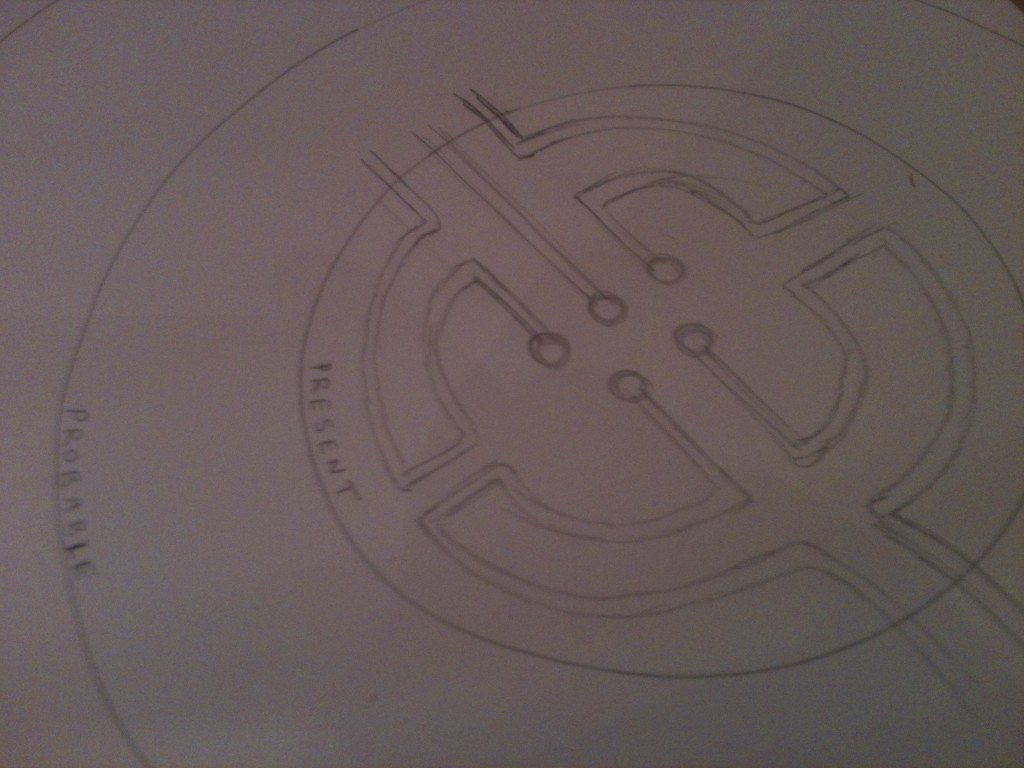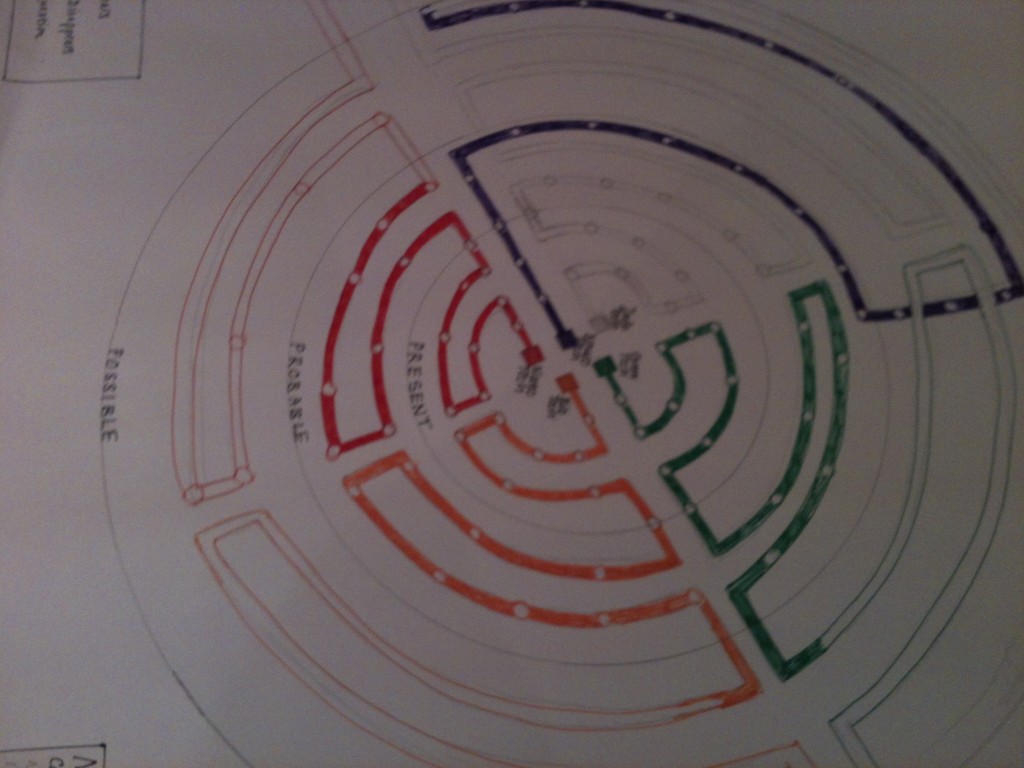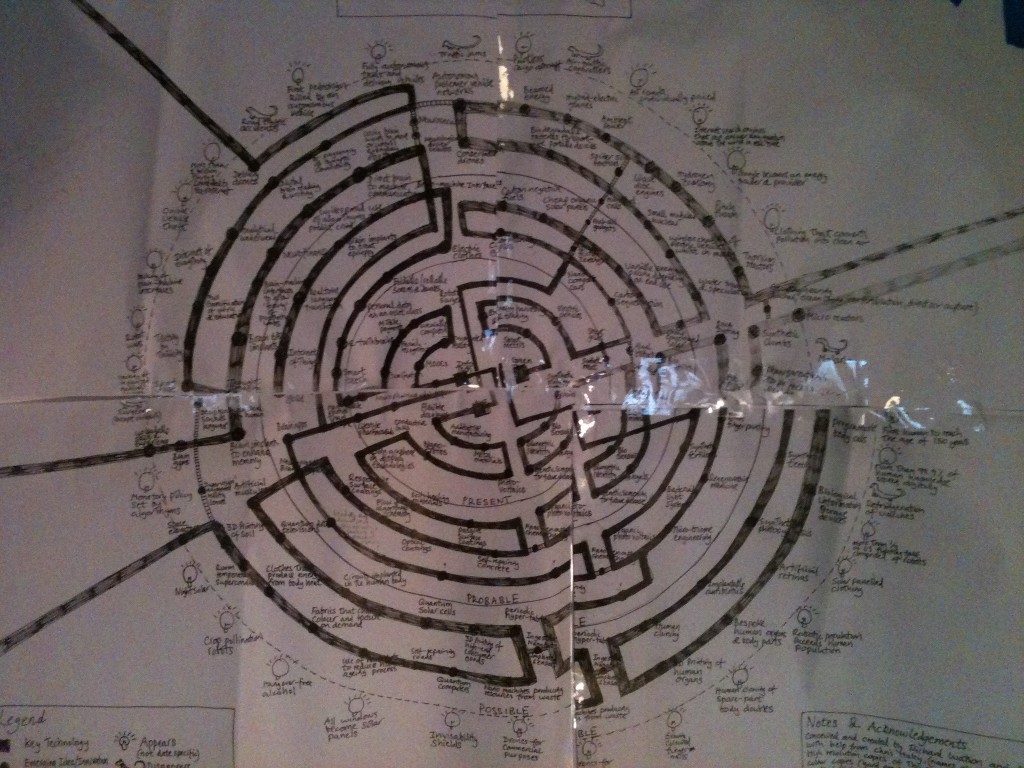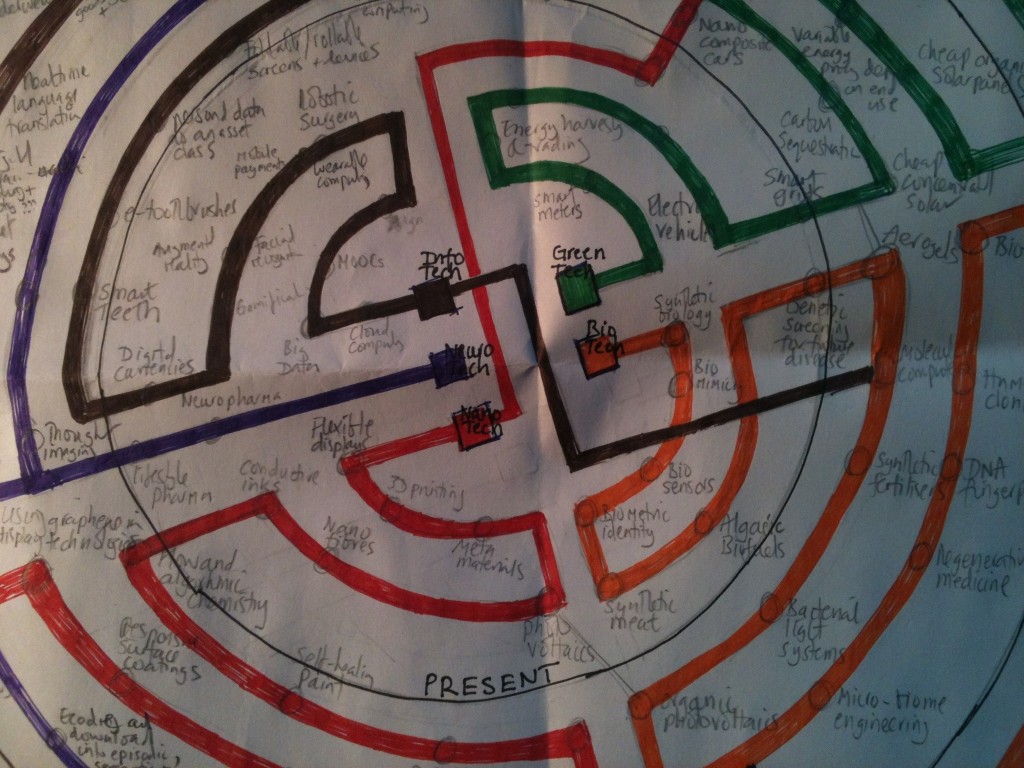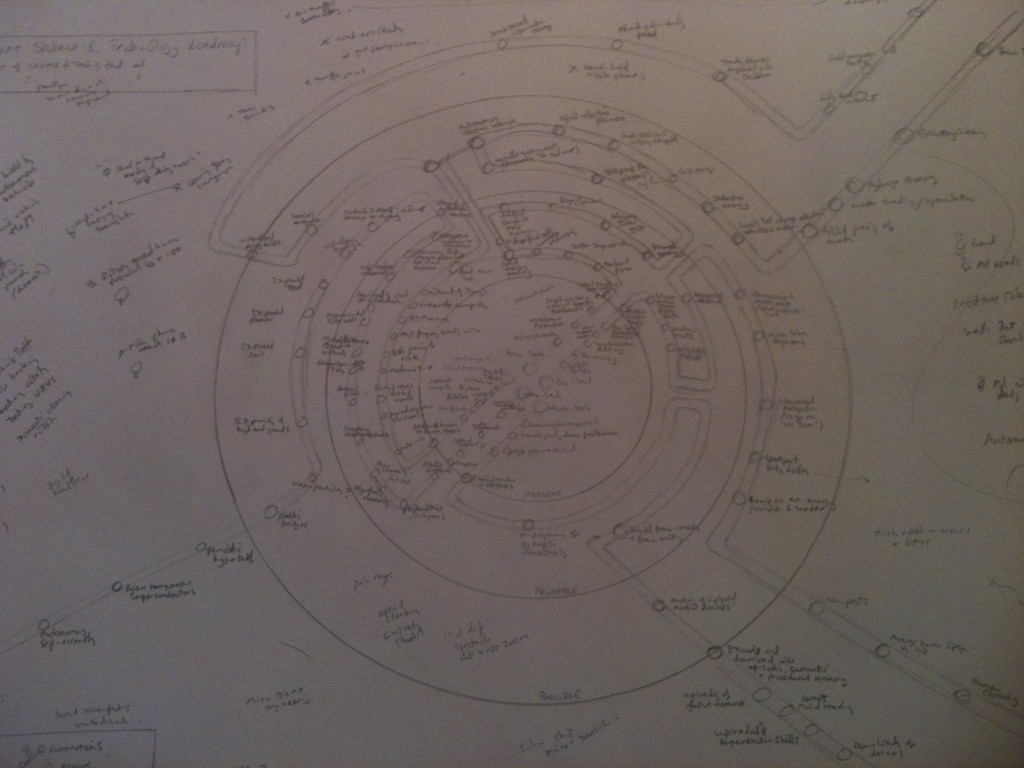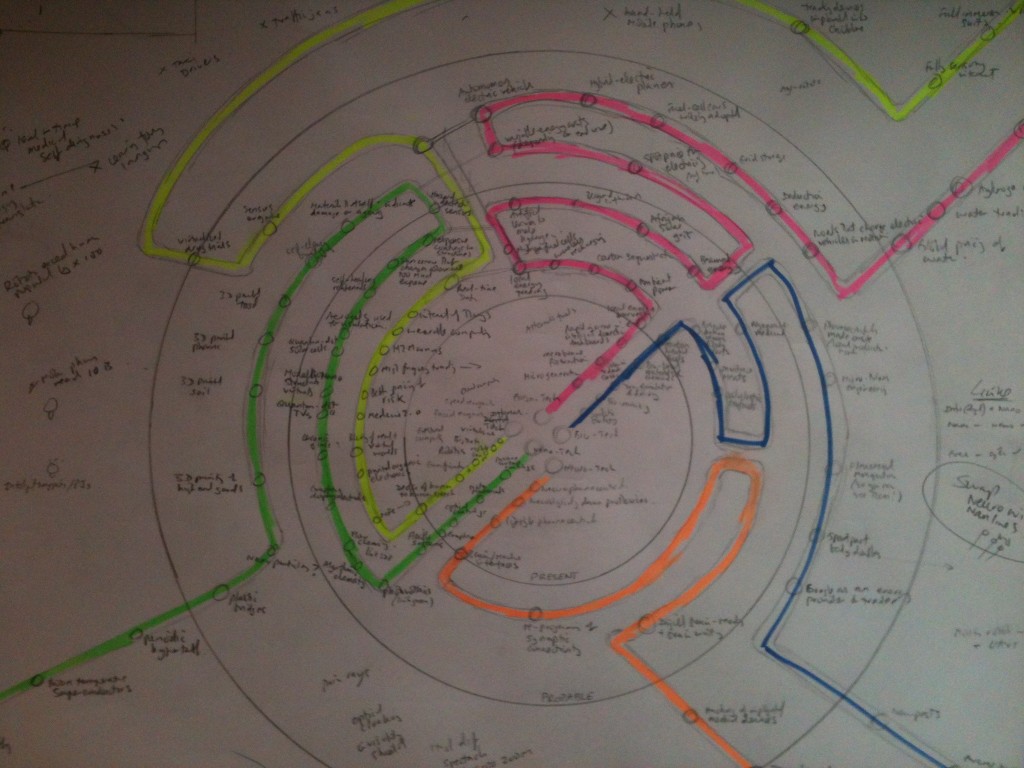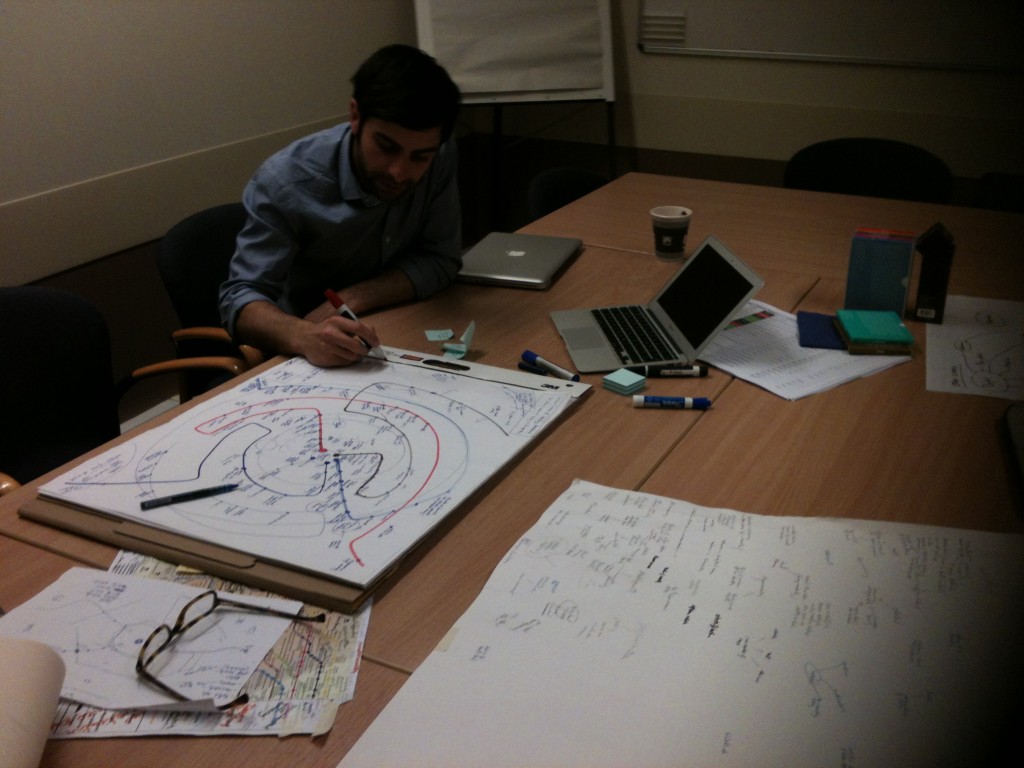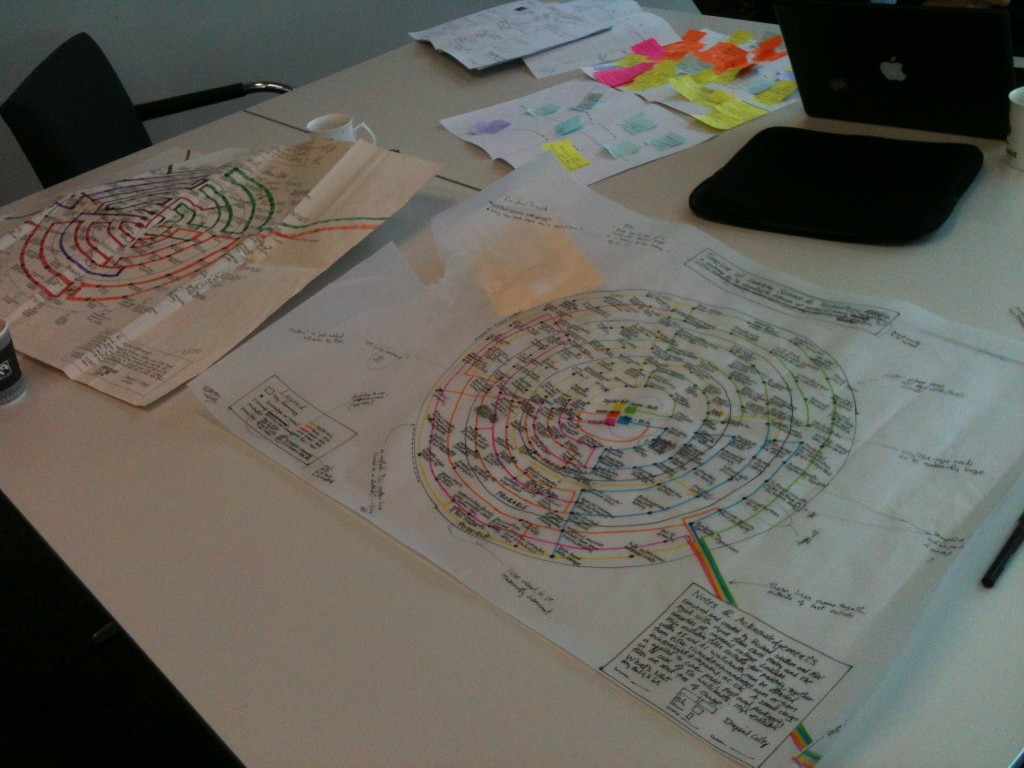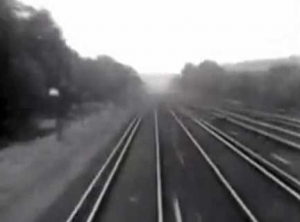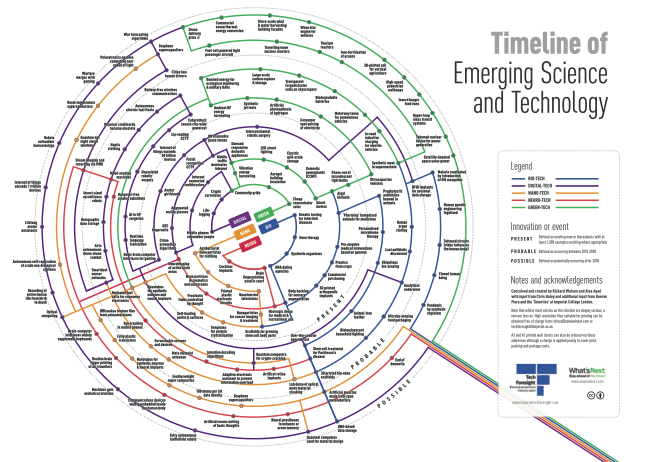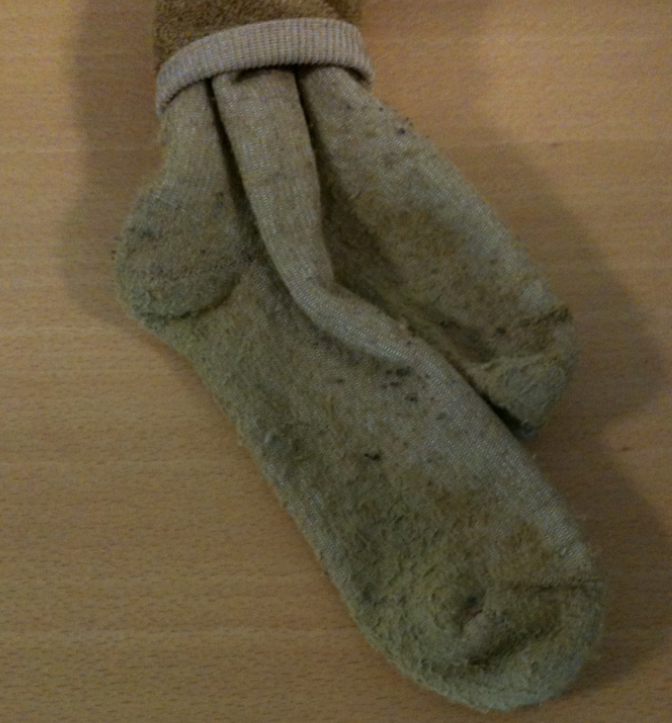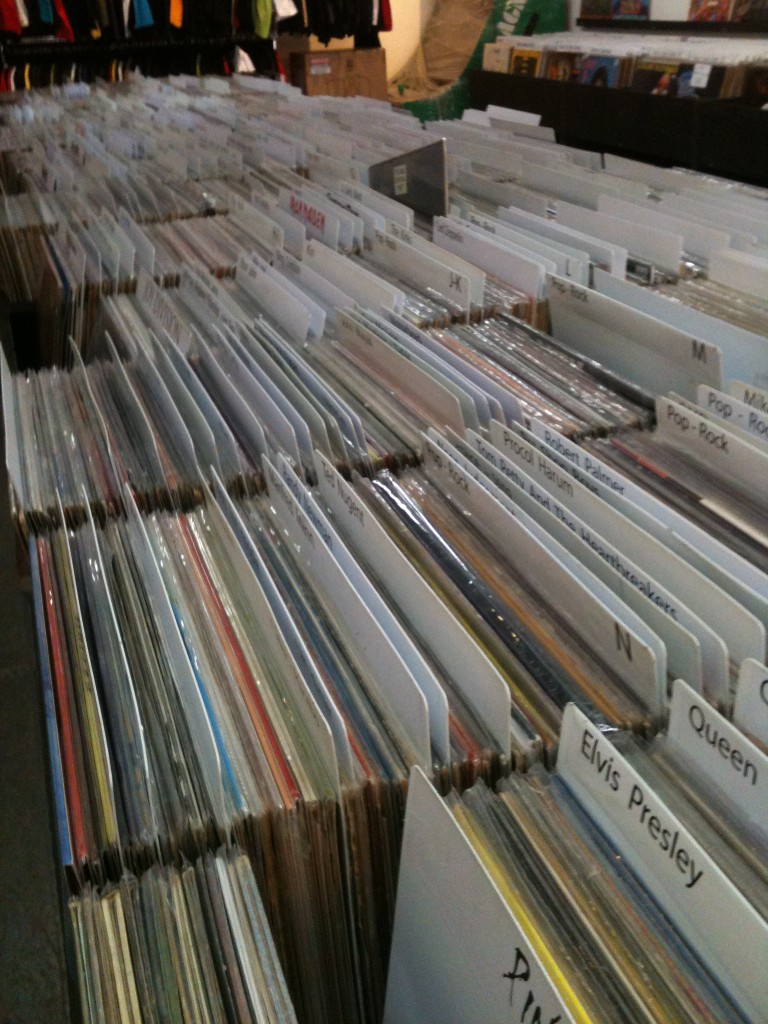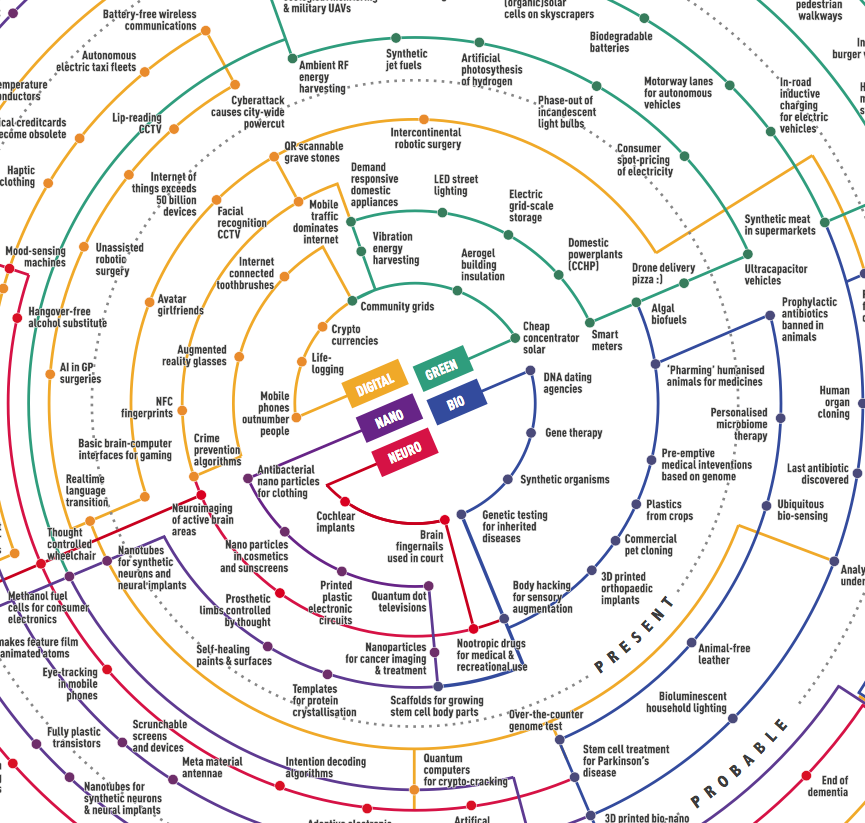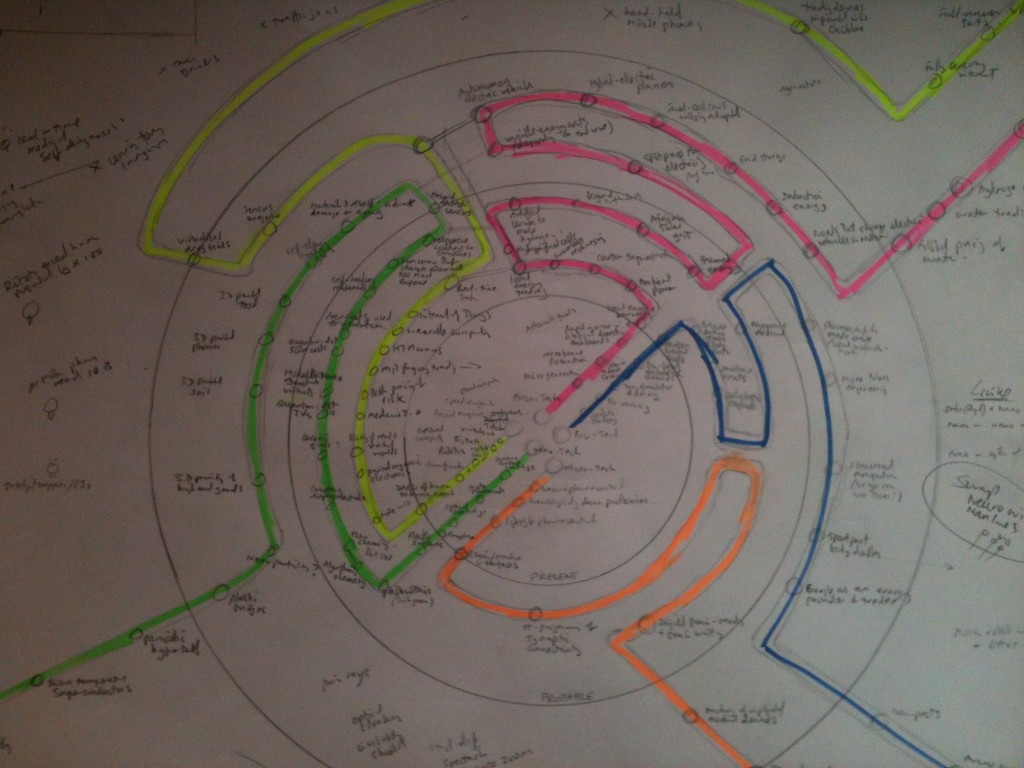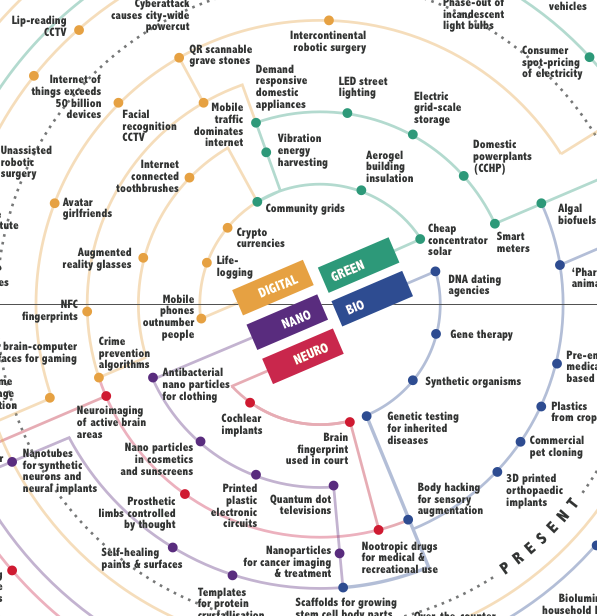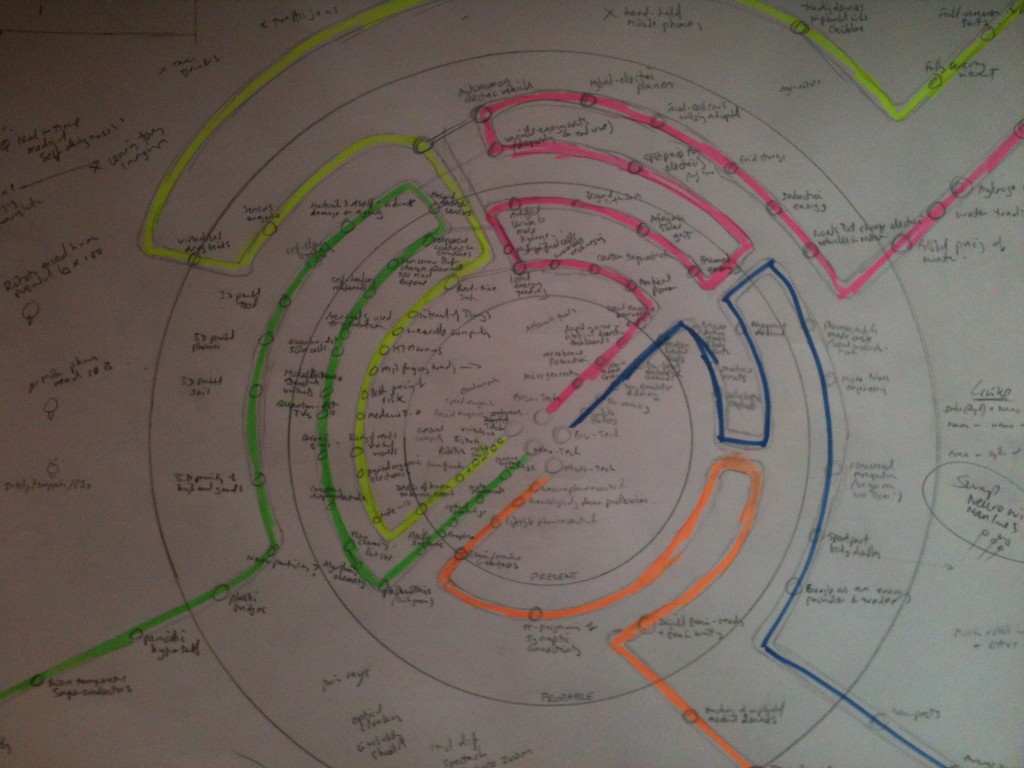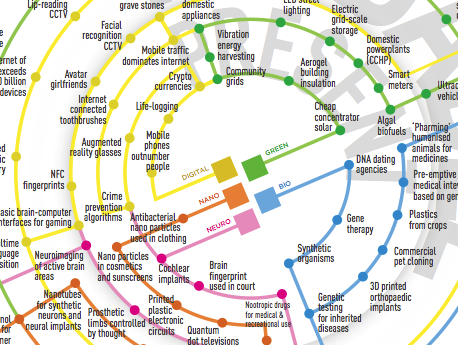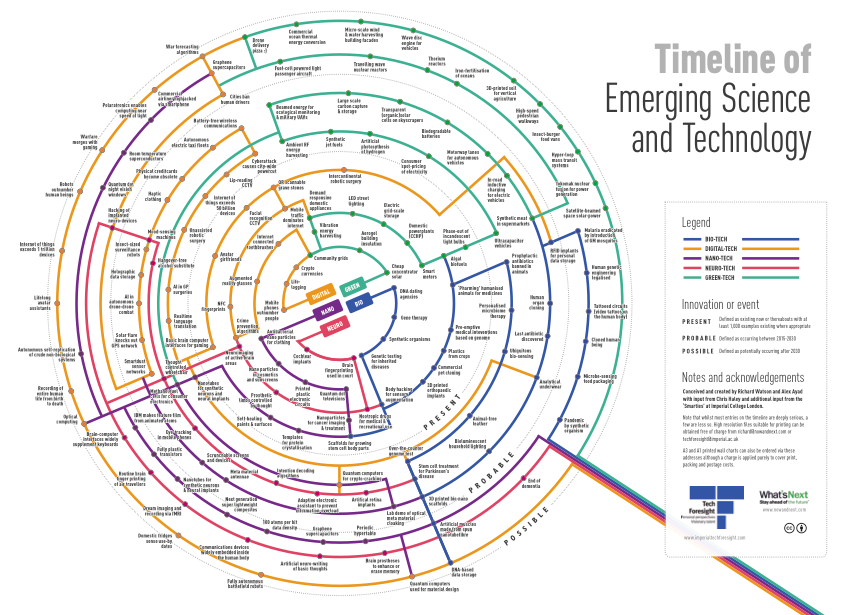
Here is the timeline of emerging science & technology created in conjunction with the technology-forecasting folks at Imperial College London (especially Alex Ayad, but a big thanks to Chris Haley in the later stages too). Above is an image of the finished map. We had a long discussion about whether to have ‘Mobile phones outnumber people’ as ‘Present’, but at 6.9 billion phone subscriptions it’s close enough.
Download a high resolution PDF suitable for printing (Colour A3, or larger, recommended).
If you’d like a printed paper hard copy these will be available in a week or so.
At the bottom of this post are a few images showing how the map was created and how the image evolved.
In terms of what’s on the map, there are 5 key mega-technologies, which are Digital-tech (Essentially Info-tech), Bio-tech, Nano-tech, Neuro-tech and Green-tech (sometimes referred to as clean-tech).
We have split the map into 3 time zones. The first is ‘Present’, which we are defining as now or thereabouts (2014-2015) with at least 1,000 working examples where appropriate (events can be one-off occurrences, but innovations generally need at least 1,000 working examples to be included). ‘Probable’ is the second zone and this is defined as 2015-2030. The third zone is ‘Possible’, defined as being potentially available from 2030 onwards. Most of the map is serious, but we couldn’t resist having some fun in a few areas 🙂
Hope you all enjoy it and do please pass it along if you find it interesting or useful. Note that the timeline is published under a Creative Commons license so you can use it commercially or make versions of it without asking, although we would be grateful if anyone using it links back to our original version.
As for what’s on each line here’s a list.
Green-tech present
Cheap concentrator solar
Aerogel building insulation
Vibration energy harvesting
Community grids
Demand responsive domestic appliances
LED street lighting
Electric grid-scale storage
Domestic power plants (CCHP)
Smart meters
Algal biofuels
Green-tech probable
Ultra capacitor vehicles
Consumer spot-pricing of electricity
100% phase out of incandescent light bulbs
Artificial photosynthesis of hydrogen
Synthetic jet fuels
Ambient RF energy harvesting
Beamed energy for ecological monitoring & military UAVs
Large scale carbon capture & storage
Transparent (organic) solar cells on skyscrapers
Biodegradable batteries
Motorway lanes for autonomous vehicles
In-road inductive charging for electric vehicles
Synthetic meat in supermarkets
Green-tech possible
Travelling wave nuclear reactors
Fuel cell powered light passenger aircraft
Drone delivery of pizza
Commercial ocean thermal energy conversion
Micro-scale wind and water harvesting building facades
Wave disc engines for vehicles
Thorium reactors
Iron fertilisation of oceans
3D printed soil for vertical agriculture
High-speed pedestrian walkways
Insect-burger food vans
Hyper-loop mass transit systems
Tokomak nuclear fusion for power generation
Satellite beamed space-solar power
Bio-tech present
DNA dating agencies
Gene therapy
Synthetic organisms
Genetic testing for inherited diseases
Body hacking for sensory augmentation
3D printed orthopaedic implants
Commercial pet cloning
Plastics from crops
Pre-emptive medical interventions based on genome
‘Pharming’ humanised animals for medicines
Bio-tech probable
Prophylactic antibiotics banned in animals
Personalised micro biome therapy
Ubiquitous bio sensing
Animal-free leather
Over the counter genome test
Stem-cell treatment for Parkinson’s disease
3D printed bio-nano scaffolds
Human organ cloning
RFID implants for personal data storage
Last antibiotic discovered
Bio-tech possible
Artificial muscles from spun Nano-fibre
DNA based data storage
Microbe-sensing food packaging
Malaria eradicated via introduction of GM mosquitos
Human genetic engineering legalised
Tattooed circuits (video tattoos on the human body)
Cloned human being
Pandemic by synthetic organism
Digital-tech present
Mobile phones outnumber people (shift end of present?)
Life-logging
Crypto currencies
Internet connected toothbrushes
Augmented reality glasses
Crime prevention algorithms
NFC fingernails
QR scanable gravestones
Facial recognition CCTV
Avatar girlfriends
Basic brain-computer interfaces for gaming
Intercontinental robotic surgery
Digital-tech probable
Real-time language translation
Quantum computers for crypto cracking
Analytical underwear
AI in GP surgeries
Unassisted robotic surgery
Internet of things exceeds 50 billion devices
Lip-reading CCTV
Cyber attack causes citywide power cut
Battery-free wireless communications
Autonomous electric taxi fleets
Physical credit cards become obsolete
Haptic clothing
Mood sensing moods
Insect-sized surveillance robots
Holographic data storage
AI in autonomous drone-drone combat
Solar flair knocks out GPS network
Digital-tech possible
Hacking of implanted neuro-devices
Cities ban human drivers
War forecasting algorithms
Commercial aircraft highjacked via smart phone
Warfare merges with gaming
Robots outnumber human beings
Internet of things exceeds 1 trillion devices
Lifelong avatar assistants
Recording of entire human life from birth to death
Domestic fridges sense use-by dates
Fully autonomous battlefield robots
Quantum computers used for material design
Nano-tech present
Antibacterial nano-particles for clothing
Nano-particles in cosmetics and sunscreens
Plastic printed electronic circuits
Quantum dot televisions
Nanoparticles for cancer imaging and treatment
Scaffolds for growing stem cell body parts
Templates for protein crystallisation
Self-healing paints and surfaces
Nanotubes for synthetic neurons and neural implants
Methanol fuels cells for consumer electronics
Nano-tech probable
Meta-material antennae
Scrunchable screens and devices
Nano-tech possible
Lab demo of optical meta material cloaking
Polartronics enables computing near speed of light
Room temperature superconductors
Quantum dot night vision windows
Autonomou data density
Graphene super capacitorss self-replication of crude non-biological systems
IBM makes feature film from animated atoms
Fully plastic transistors
Nanotubes for synthetic neurons and neural implants
Next generation super-light composites
100 atoms per bit data density
Neuro-tech present
Cochlear implants
Brain fingerprinting used in court
Nootropic drugs for medical and recreational use
Prosthetic limbs controlled by thought
Neuro imaging of active brain areas
Neuro-tech probable
Thought controlled wheelchair
Eye tracking in mobile phones
Intention decoding algorithms
Adaptive electronic assistant to prevent information overload
Artificial retina implants
Hangover-free alcohol substitute
Neuro-tech possible
Hacking of implanted neuro devices
Brain-computer interfaces widely supplement keyboards
Routine brain finger printing of air travellers
Dream imaging and recording via fMRI
Communications devices widely embedded inside the human body
Artificial neuro-writing of basic thoughts
Brain prostheses to enhance or erase memory
End of dementia
Design development
The design is loosely based upon my previous 2010+ trends and technology timeline. (Click here for PDF). The first rough was created with a pencil on an A3 sheet of white paper on the kitchen table and then progressed through numerous versions (about a dozen from memory). The circles were originally drawn using kitchen plates and large bowls and the coloured lines were originally created using a mixture of highlighter pens and my children’s marker pens. The final version – prior to professional design input -was drawn on A3 tracing paper so as to get things aligned and connecting. Design credit also belongs to Lawrence Whitely and a big thanks is also due to Kereen at Imperial College.
As for future updates we are already thinking about an animated version and perhaps positive and negative versions (utopian and dystopian versions). If you have any ideas about what should/shouldn’t be on future versions (or spot any silly mistakes do please tell us!!!).
